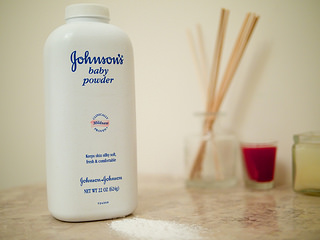Photo: Flickr.com/Austin Kirk
About Johnson & Johnson
Johnson & Johnson is one of the world’s leading health care companies, employing nearly 130,000 employees across 275 operating companies. Founded in 1886 in New Jersey, the company’s business units are spread across three major categories: Consumer Healthcare, Medical Devices & Diagnostics, and Pharmaceuticals. Major brand names include Johnson’s, Aveeno, Clean & Clear, Neutrogena, RoC, Libriderm, Dabao, Listerine, Rembrandt, Reach, Band-Aid, Neosporin, Spelnda, Tylenol, Sudafed, Motrin IB, and Pepcid AC.
The company is a member of both the S&P 500 and Dow 30 indices and is traded under the ticker symbol JNJ.
Johnson & Johnson’s Dividend and Stock Split History
Johnson & Johnson traditionally announces annual dividend increases in April, with the stock going ex-dividend in May. The company became a Dividend Aristocrat in 1987 and has raised its dividend for 54 consecutive years, starting with its first dividend increase in 1962.
Johnson & Johnson has compounded its payout at an average rate of 6.7% over the last 5 years and 7.4% over the last 10 years.
Johnson & Johnson’s stock has split seven times since 1959: 2 for 1 splits in June 1992, June 1996, June 2001, and May 1989; 2 ½ for 1 split in January 1959, and 3 for 1 splits in May 1981 and May 1970. Accounting for all these splits, 1 share of JNJ owned at the beginning of 1959 would now be 360 shares.
Johnson & Johnson’s Direct Purchase and Dividend Reinvestment Plans
JNJ does not offer a direct investment plan but does offer a dividend reinvestment plan, which is administered through Computershare. JNJ pays most purchase fees associated with the dividend reinvestment plan with one exception – the only exception is a $1 automatic reinvestment fee. The investor is responsible for paying fees when selling shares through the plan. Once enrolled in the plan, investors can purchase additional shares directly with a low minimum of $25.
Investors interested in participating in the dividend reinvestment plan must own their shares directly, and not in “book form” through a broker. Investors that own shares in book form must direct their broker to transfer the shares directly to them in certificate form. If investors own shares in certificate form, those shares can be transferred into the plan. Specific information on the dividend reinvestment plan, including enrollment forms and fees are available at the ComputerShare Investor Centre webpage for JNJ.
Helpful Links
Johnson & Johnson Investor Relations
Current quote and financial summary (finviz.com)
Information on the direct purchase and dividend reinvestment plans for Johnson & Johnson

Pingback: Dividend Aristocrats Week in Review for April 26, 2014: Johnson & Johnson Increases Dividend for 52nd Year | Dividend Aristocrat Stocks